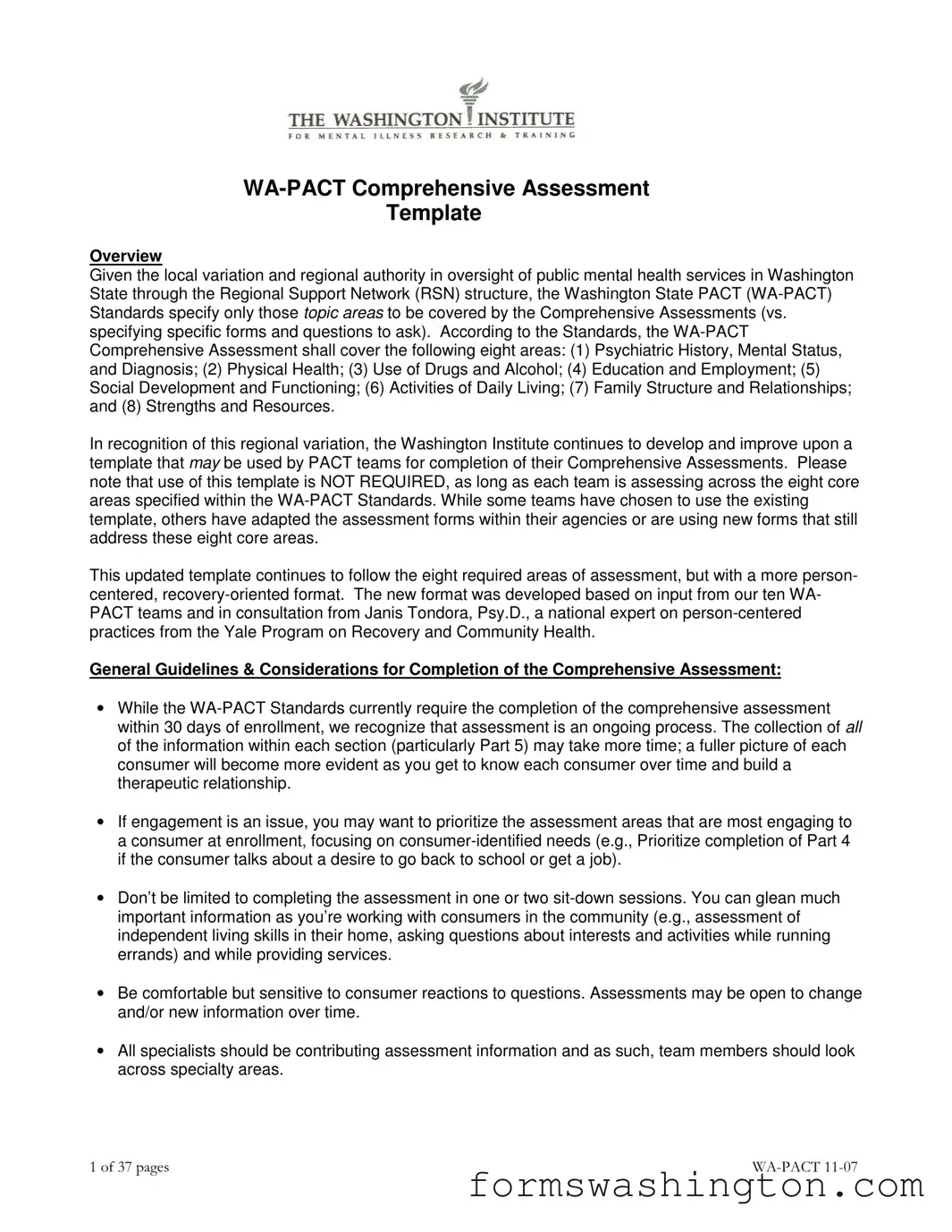The Washington Pact form serves as a critical tool for assessing individuals receiving public mental health services in Washington State. Designed to accommodate the diverse needs of various Regional Support Networks (RSNs), this form outlines eight essential areas that must be covered in Comprehensive Assessments. These areas include Psychiatric History, Mental Status, and Diagnosis; Physical Health; Use of Drugs and Alcohol; Education and Employment; Social Development and Functioning; Activities of Daily Living; Family Structure and Relationships; and Strengths and Resources. The form is not a rigid template; rather, it provides flexibility for PACT teams to adapt their assessments based on local practices while ensuring that all critical components are addressed. Developed with input from experienced professionals, including a national expert on person-centered practices, the updated template emphasizes a recovery-oriented approach. This approach prioritizes the consumer's voice and experience, allowing for a more personalized assessment process. The guidelines encourage ongoing assessment and engagement, recognizing that building a therapeutic relationship takes time and that information may evolve as the consumer's needs change. By focusing on the consumer's perspective and individual goals, the Washington Pact form aims to enhance the quality of mental health services across the state.
